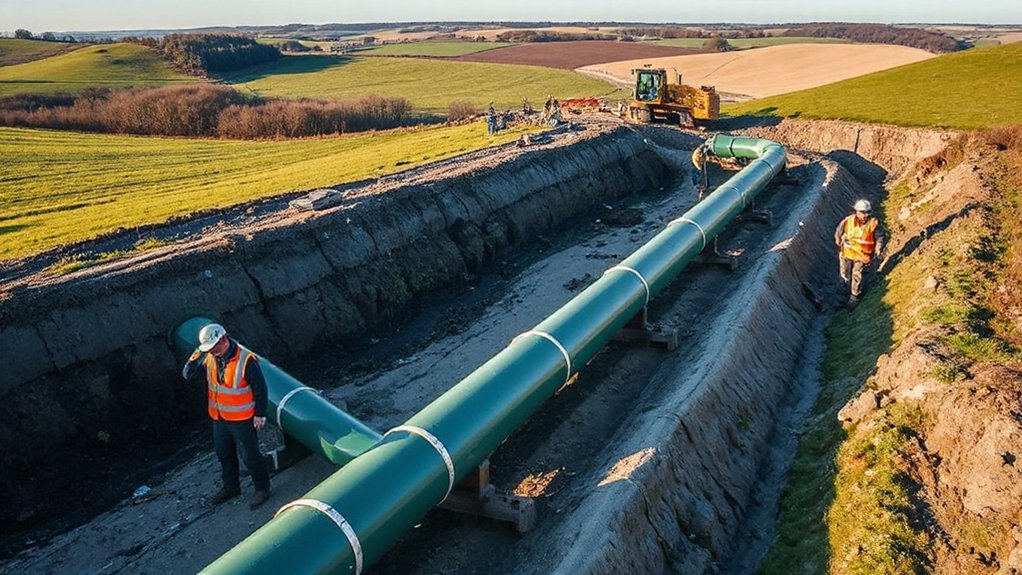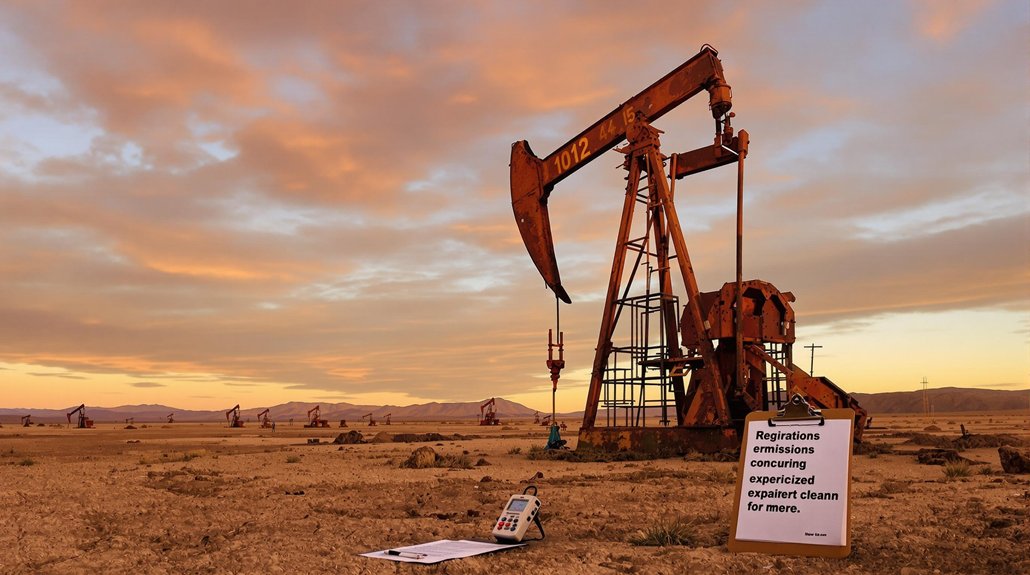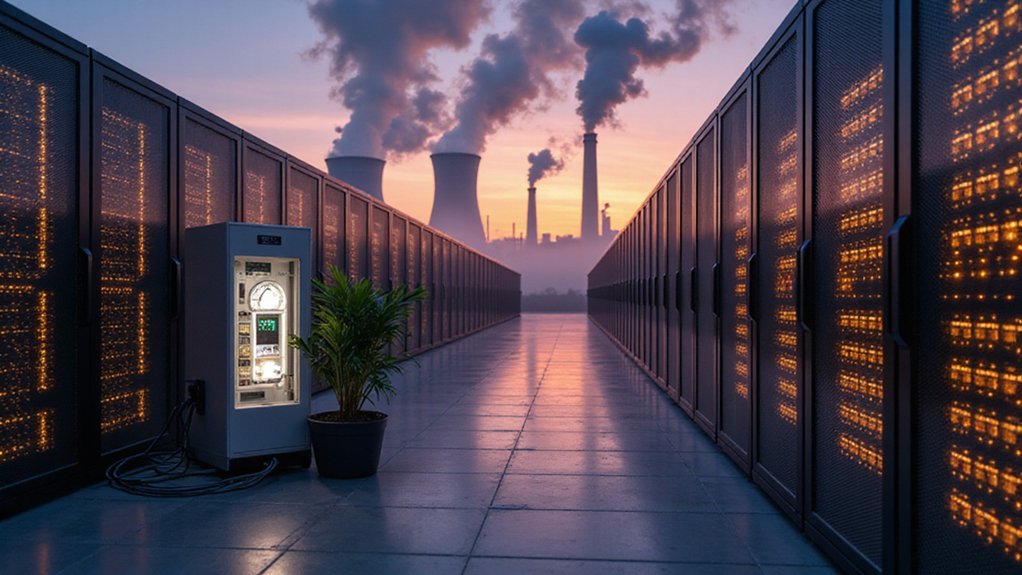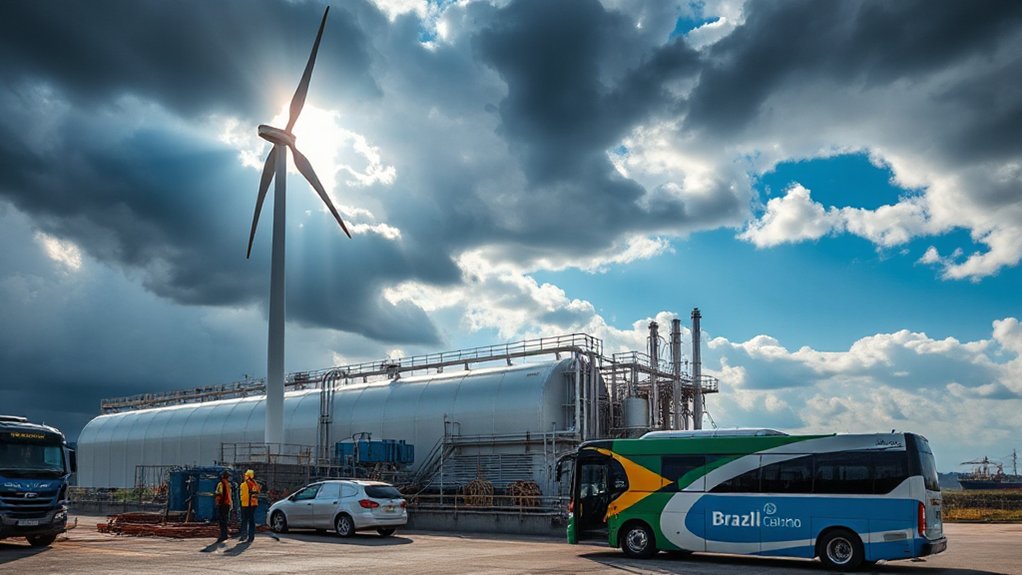While most Britons go about their daily lives, a quiet revolution is happening beneath their feet. A £164 million transformation of the nation’s pipeline infrastructure is fundamentally changing how energy flows through the country. Not exactly dinner table conversation, but it should be.
DNV Spadeadam’s FutureGrid facility recently proved what many thought impossible—existing gas pipelines can safely transport hydrogen. They tested blends from 2% all the way to 100% hydrogen, with surprisingly boring results. No explosions. No major issues. Just pipes doing their job with a different gas.
National Gas even developed fancy deblending technology to extract hydrogen for vehicles. The government, moving at its typical glacial pace, plans to decide on transmission blending by 2024.
Meanwhile, water pipelines are getting a serious tech upgrade. Over 800,000 kilometers of pipes now have digital monitoring systems watching for leaks. Before this, finding leaks meant sending armies of workers with expensive equipment to dig up roads. Not anymore.
Artificial intelligence and blockchain—yes, blockchain for pipes—now defend our water supply. Who would’ve thought?
The clever bit? These upgraded pipelines actually make money. The FreeSpin® In-line Turboexpander (cool name, right?) converts wasted pressure into electricity. Pipeline operators are turning cost centers into profit machines while reducing their carbon footprint. Two birds, one stone.
Pipeline operators aren’t just cutting emissions—they’re profiting from it. Innovation transforms once-costly infrastructure into revenue-generating assets.
Most impressive is how existing infrastructure can handle different gases. The shift to renewable sources has contributed to a record output of 144.7 TWh in 2024, necessitating these adaptations in our pipeline systems. This integration aligns with the growing global trend where hydropower capacity remains the leading renewable electricity generator worldwide. Effective pipeline monitoring dramatically reduces the alarming 20-25% water loss that currently plagues the UK system. With some tweaks to compression equipment and filtration systems, the same pipes that carried natural gas can transport hydrogen. The Trailblazer Pipeline conversion proves it’s possible. No need to dig up half the country.
References
- https://farmonaut.com/infrastructure/uk-water-infrastructure-monitoring-800000-km-pipelines
- https://aab.uk/blog/the-uks-renewable-energy-revolution-whats-next-for-2025-and-beyond/
- https://www.gov.uk/government/publications/clean-power-2030-action-plan/clean-power-2030-action-plan-a-new-era-of-clean-electricity-main-report
- https://energiesmedia.com/the-future-of-natural-gas-why-pipeline-networks-will-look-different-by-2030/
- https://www.solarpowerportal.co.uk/solar-planning/uk-solar-pipeline-skyrockets-as-july-2025-the-busiest-month-on-record
- https://pipeline.nista.grid.civilservice.gov.uk








